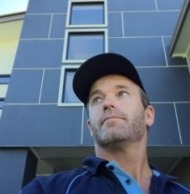Structural Damage Signs to Houses
Every homeowner is entitled to feel safe and secure and comfy in their own house, therefore it could be particularly stressful when indications of architectural damage are discovered. From irregular floor surfaces and warped ceilings through to subjected spaces between walls, pest infestations, and more, there are lots of issues that can arise which require examining and fixing The following are the top signs of structural damage to homes, to help you to determine problems prior to them becoming more significant.
Termites — Termites can easily eat away at support beams, ceiling joists, wall studs and a lot more, leading to great structural damage to homes over time. It is very easy to confuse structural damage induced by termites, such as loose ceilings and wall breaking, for normal shifting. A house that is troubled from an infestation of termites can come to be unliveable if they are not eliminated sooner instead of later.
Roof Leaks –– fixing roof leakages quickly is extremely significant because the water might trigger considerable damage to internal components and trigger a considerable (and expensive) damage. Loose or uneven roof lines are an indicator that there are certain problems with the roof construction. This could be triggered by the removal of load-bearing wall space, termite problems, congestion of the supporting members through time, or inaccurate size of framing timbers.
Wall and Ceiling Cracks — Not all wall surface, as well as ceiling cracks, are indicatory of structural damage, but it is significant to keep an eye on them to discover whether they evolve into something difficult. Cracks on top entrances in a step structure or cracks that are supported by a loose ceiling or uneven floor surfaces are symptoms of a significant issue that should be resolved as soon as possible.
Uneven Floors — Uneven floors differ in severity and might or might not need your prompt attention. The more severe factors consist of incorrect construction and a settling groundwork, which calls for the knowledge of a structural contractor to evaluate the problem. Other factors for uneven floors consist of damaged floor joists, termite damage, and insufficient sub-floor aids.
Damp Sub Floors — Whenever there is a subfloor that is lacking enough ventilation stops evaporation from happening and forces moisture and mould development to build up. This enhances in moisture can result in decomposing floor timbers, which could be determined by surface spots as well as other symptoms of deterioration. Solutions vary from cleaning blockages that avoid evaporation through to improving the number of vents for much better airflow or drainage improvements.
Subjected Gaps Between Walls — Subjected gaps between external and internal walls can be caused by loose floor joists, frequently taking place when support pillars are spread too far apart or have been damaged by termites. They can additionally be triggered by foundation settling, which is where the ground shifts or changes, impacting your house during the undertaking.
Make certain that you land up with an inspector that is not well-informed or skilled. If you need help from a qualified and experienced building inspector, you can give a call to help you inspect your property with top-quality care and service.
At Gold Coast Building Inspector, we can inspect your home, can provide Quotes/Estimates towards defect issues and complete repairs or rebuild after purchasing the property. Our Building Inspection Reports will provide you with a detailed analysis of the condition of your proposed property in an easy to read format.
All our building inspections “Exceed“ the Australian Inspection Standards (Australia AS 4349.1-2007) and are completed by experienced registered Builders you can rely on. Call Us Today on 0414 383 489


